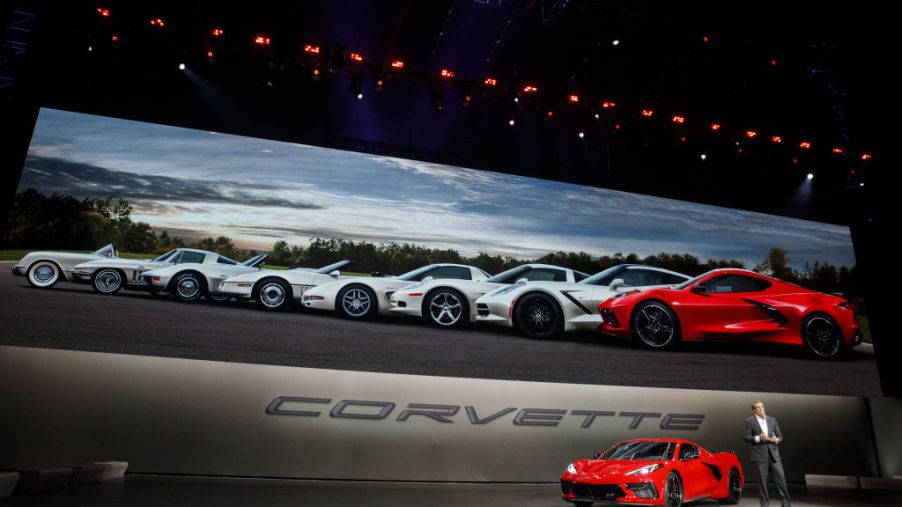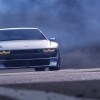
How the 2020 Chevrolet Corvette Stingray Different From Previous Models
In 1953 Chevy introduced the first generation Corvette to the world. It was a bold move for the automaker. Especially since no American dealer had tried its hand at sports cars up to that point, despite the huge influx of imports coming in from Germany and England. It appeared to be a gamble, but it paid off. The Corvette was a huge success, and thus, an empire was born.
Since then, Chevy has been striving for greater success, trying to not only keep up with the competition but to also set the standards for which other automakers try to imitate. Several models of the Corvette have hit the markets over the years. Favorites include the Z06 Big Tank, Rondine, L88, Rebel, Grand Sport, and the ZL1.
There is one particular model that comes to mind quicker than any other due to the fact that Chevy has once again made history, and that model is the 2020 Stingray.
Even though it’s new and shiny, and incredibly fun to drive, car enthusiasts may be wondering how the 2020 model compares to classics like the ’65 Stingray. Here’s a quick run through with the details.
’63 Stingray
Greatness has to start somewhere, and for the Stingray, it all began in 1963. It was equipped with a standard V8 engine and 250 hp. Consumers could upgrade to get 340 and 360 hp engines.
The luggage compartment could be reached by tilting the seats forward. There were seven color options, and of course, soft tops. The ’63 Stingray received praise from critics for its aerodynamic design.
’64 Stingray
There wasn’t a lot of change between the ’63 and ’64 Stingray’s body, but it still developed a huge following. Power steering and rear suspension were added with much acclaim.
Road and Track test drove the ’64 when it first came out and were impressed with the high quality of the car but thought $5,000 was a little pricey. Considering the 2020 model is starting at just below $60,000, you’ll have to decide for yourself if that was too much.
’65 Stingray
The ’65 Stingray had hydraulic lifters and 350 hp. However, Car and Driver found it wanting compared to the Aston Martin DB-5 and Ferrari 250 GT. But Motor1 reports that a 1965 Stingray is still being driven and has accumulated half a million miles. If that doesn’t speak of quality, then what does?
’67 Stingray
It earned a title as one of the fastest cars Chevy ever made with a big block 427 cubic inch V8 engine and 435 hp. It was also the last of the C2 models, making the ’67 an instant classic.
2015 Stingray
In 2015, the Stingray got a huge upgrade with a new 8-speed transmission. It was a first for the Stingray, and it allowed the Stingray to go from 0 to 60 in a mere 3.7 seconds. That’s fast, but it’s not going to outrun the C8 in a race.
2020 Stingray
And now the moment of truth. In an interview with the lead designer behind the 2020 Stingray, Jay Leno asked some very pointed questions and got the answers.
The C8 is the “fastest accelerating base engine Corvette ever has built.” Since Chevy is known for its fast vehicles, especially when it comes to the Corvette.
This is possible thanks to the 6.2L Small Block V-8 LT2 engine, 495 hp and 470 lb-ft of torque. Jay Leno also pointed out that the C8 “is a total departure from every Stingray that has come before it.” Chevy felt that in order to improve the Stingray, it needed a major overhaul and it went all in.
Chevy started with an aluminum frame, and of course the mid-sized engine. This is a blessing for tall men and women who can now sit in the front seat with room to spare, unlike previous models that were nightmarish to climb in and out of.
There is now plenty of room for luggage in the front of the car and in a brilliant move that will leave motorists happy, there’s still room to place small items in the back. Those who opt for the coupe model can store the top in the trunk. Eager to please its customer base, Chevy is offering the most design options for any Corvette in its history with 12 exterior colors, six interior colors, and even a choice of seat belt colors.
Chevy is a firm believer in setting new standards. It continues to push the boundaries between what is and what could be. For this reason, the future models of the Stingray will be hard-pressed to outshine the C8.


